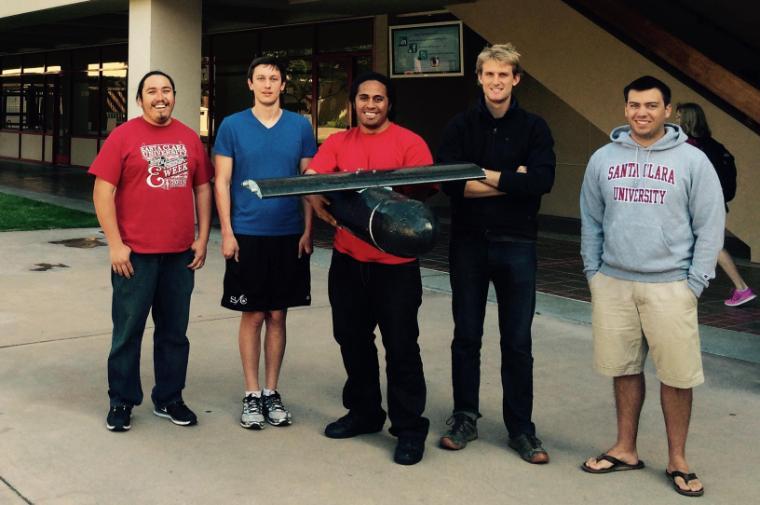
High-flying Aspirations
Senior Micah Klaeser has a dream. As a sophomore, after taking the honors class Entrepreneurship for Social Justice, the mechanical engineering student pitched an idea to SCU's Center for Science, Technology, and Society about designing an unmanned aircraft that could be used to transport medical supplies to rural health providers in the developing world. That pitch led to research in his junior year with Christopher Kitts, mechanical engineering associate professor and director of SCU's Robotics Systems Laboratory, which led to a fellowship that took Klaeser to Zambia for five weeks last summer to test technical competencies and cultural reception of his prototype.
When he returned, he and ten of his fellow senior mechanical engineers got together to further develop his idea as their Senior Design project—SkyPort, a long-range vertical takeoff and landing (VTOL) unmanned autonomous vehicle (UAV). With Klaeser acting as the project manager, the work was divvied up between three teams: controls, airframe, and payload.
The airframe group—Thomas Clark, Michael Dewane, Siosiua Faleta, and Robert Llanos-Hinson—"was responsible for designing and constructing the structural system, lifting surfaces, and fuselage," said Llanos-Hinson.
Dewane holds a pilot's license, but he notes, "None of us had any experience building or flying model planes. We spent the summer building a 'Frankenstein' hybrid from an off-the-shelf quadcopter that we meshed with an RC airplane. The four motors allowed it to take off and land vertically and the wing helped it create more lift. We used a lot of tape and fiberglass to hold it together and practiced flying it so the controls team could see how it works." They also studied different types of airfoils and considered structural elements, choosing foam to construct the shape they needed to create lift and evaluating the pros and cons of using carbon fiber or aluminum for the spar passing through the wing that would bear the weight of the controls and payload.
"The biggest challenge," said Faleta, "was that it was hard to finalize our design, based on the other teams' progress. If the payload increased, their dimensions changed, which affected our design. Communication between our three teams became really important."
Klaeser understood that too. "Working with the multiple teams, I've learned a lot about project management," he said. "While a few years ago I wouldn't have said it was in my personality to do it, it has been an interesting challenge and I've enjoyed this project enough that I've decided I want to see it through." He plans to hone those skills in the Engineering Management and Leadership master's program. Looking ahead, he has high hopes for SkyPort. "I'm working with SCU business and public health majors who have contacts in Zambia, Uganda, and Ghana. I'm talking with people to get something in the works to get the UAV back in the field in a couple of years."